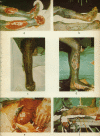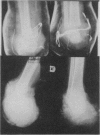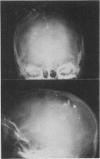Abstract
Eighty casualities, mainly due to explosive devices, sustained over a period of 3 1/2 months by the armed forces of the Sultan of Oman in counterinsurgency operations are analysed and their management by a British field surgical team is described. Of the 73 who reached the surgical centre alive, 56 per cent had suffered major injuries, yet all but 2 survived, giving an overall survival rate of 88.75 per cent (71/80). The effects of first aid and rapid evacuation on survival and their influence on the surgical work load and on the facilities required for treatment are assessed, together with their relevance to the planning of military and civilian accident services.
Full text
PDF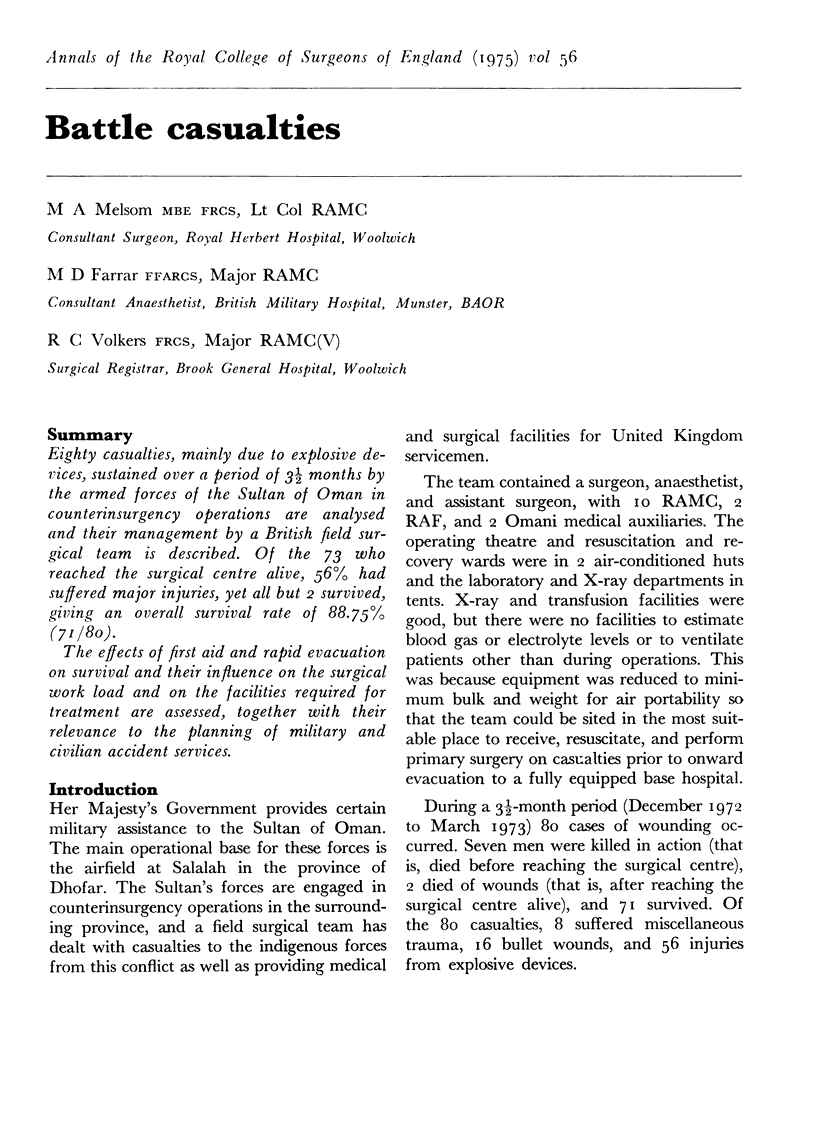

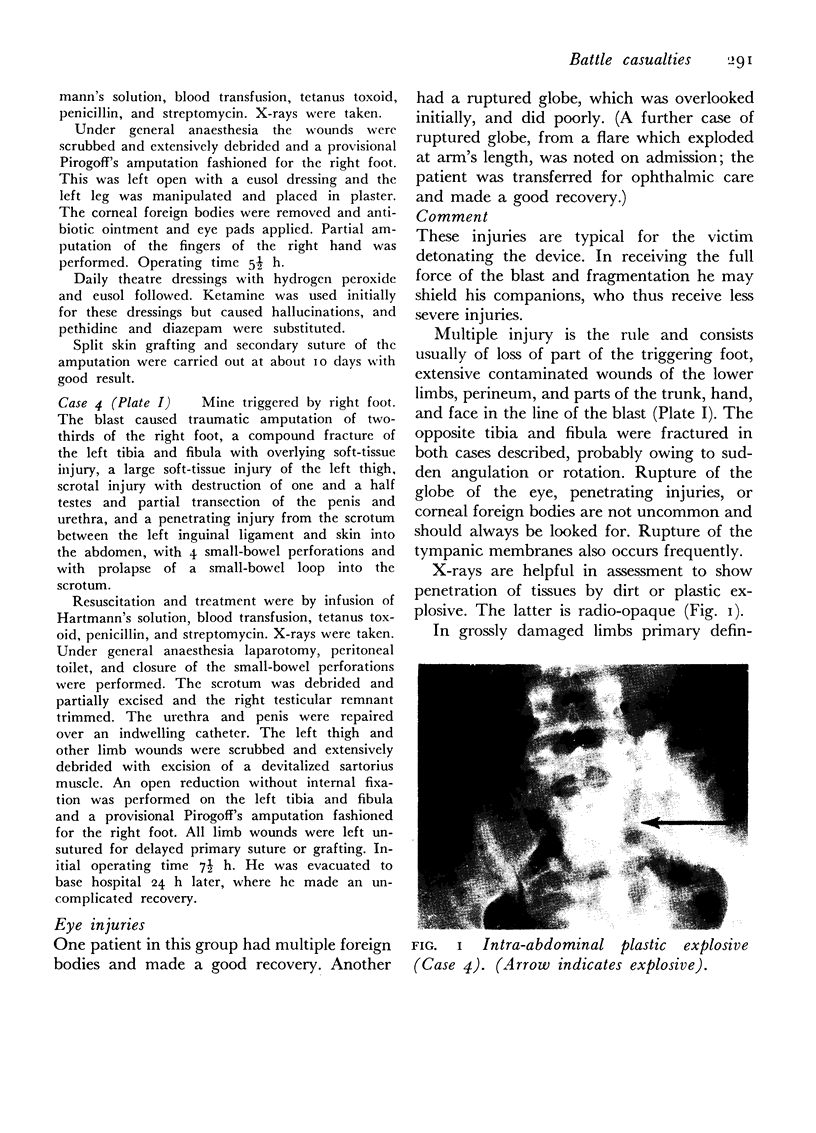


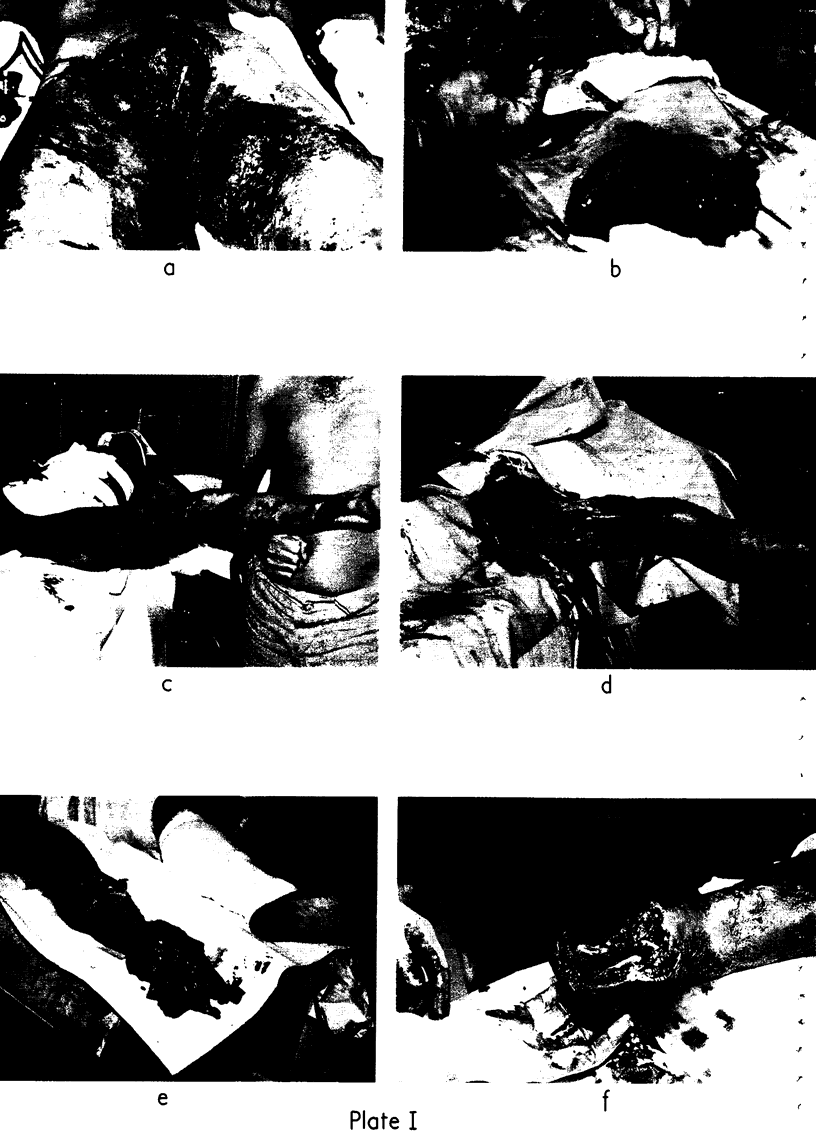
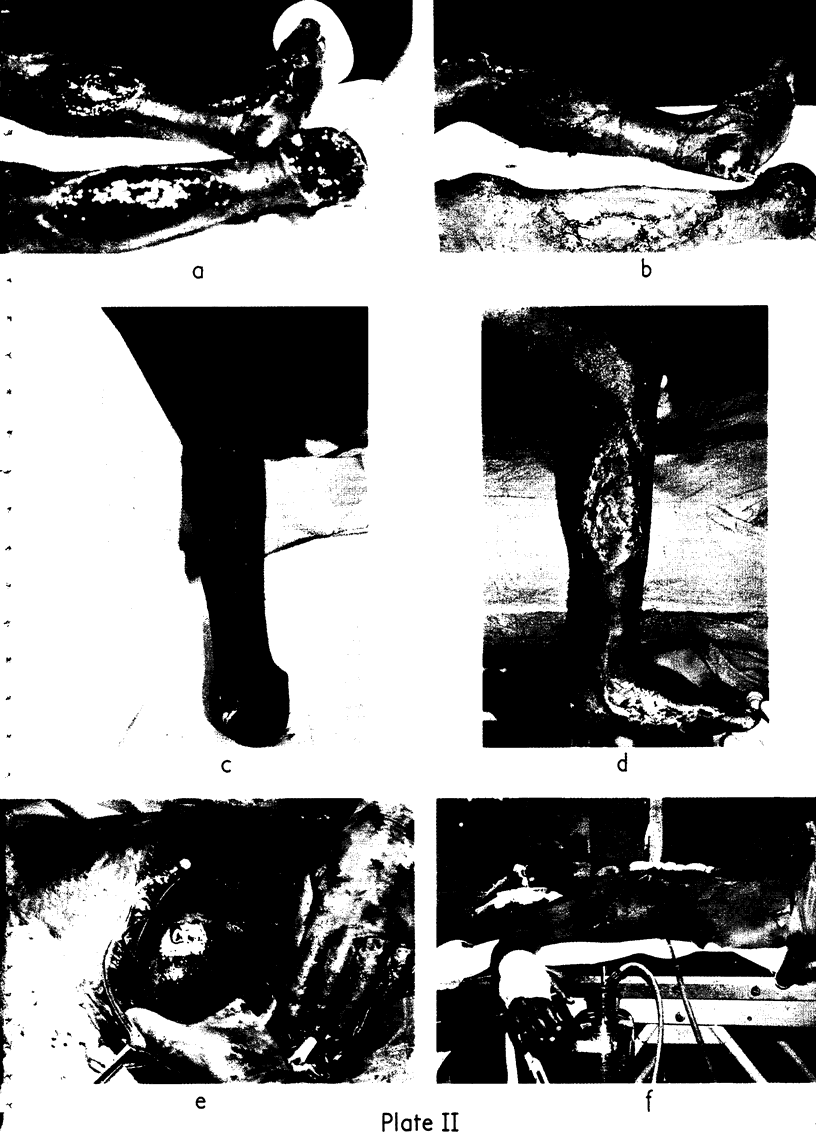
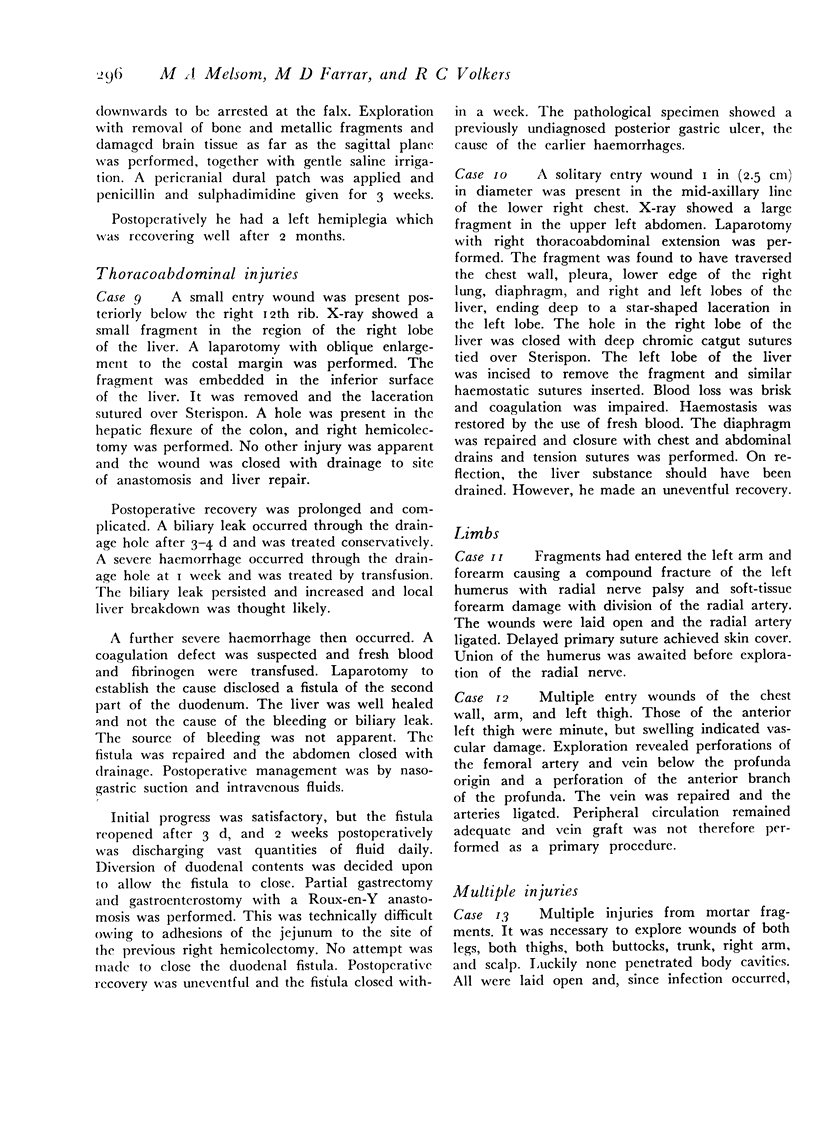
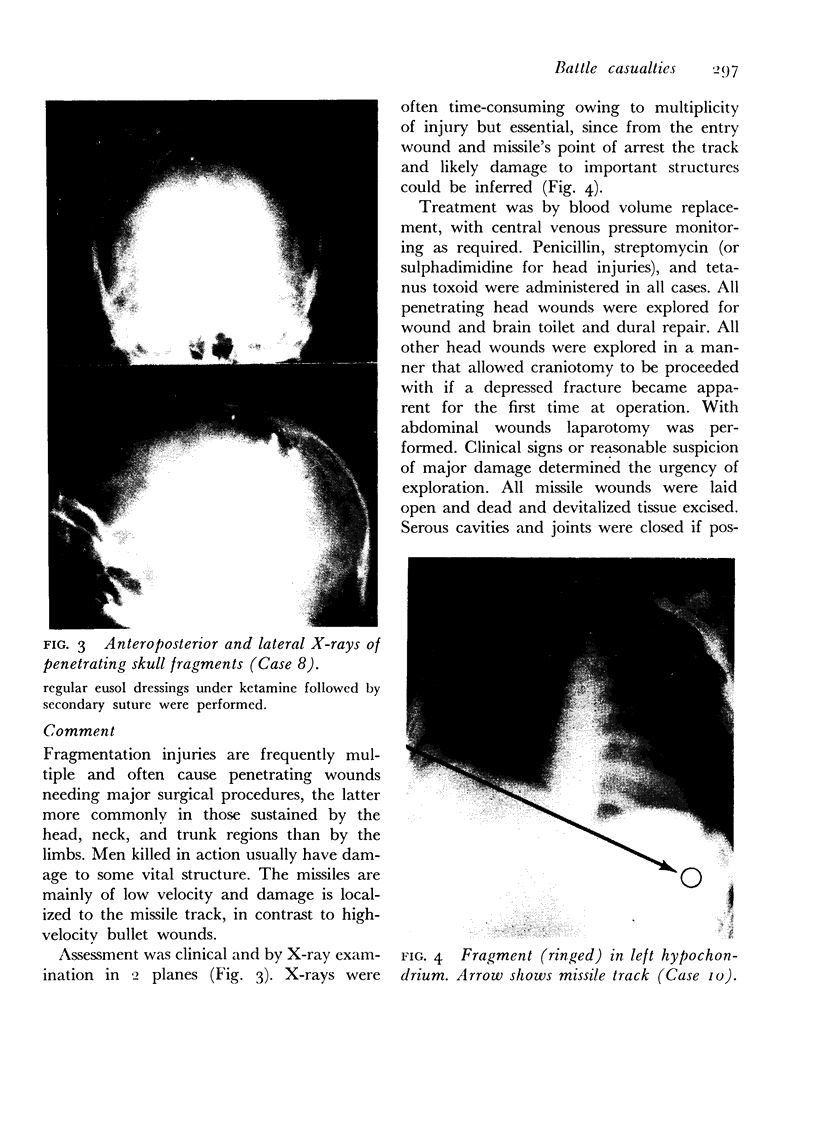
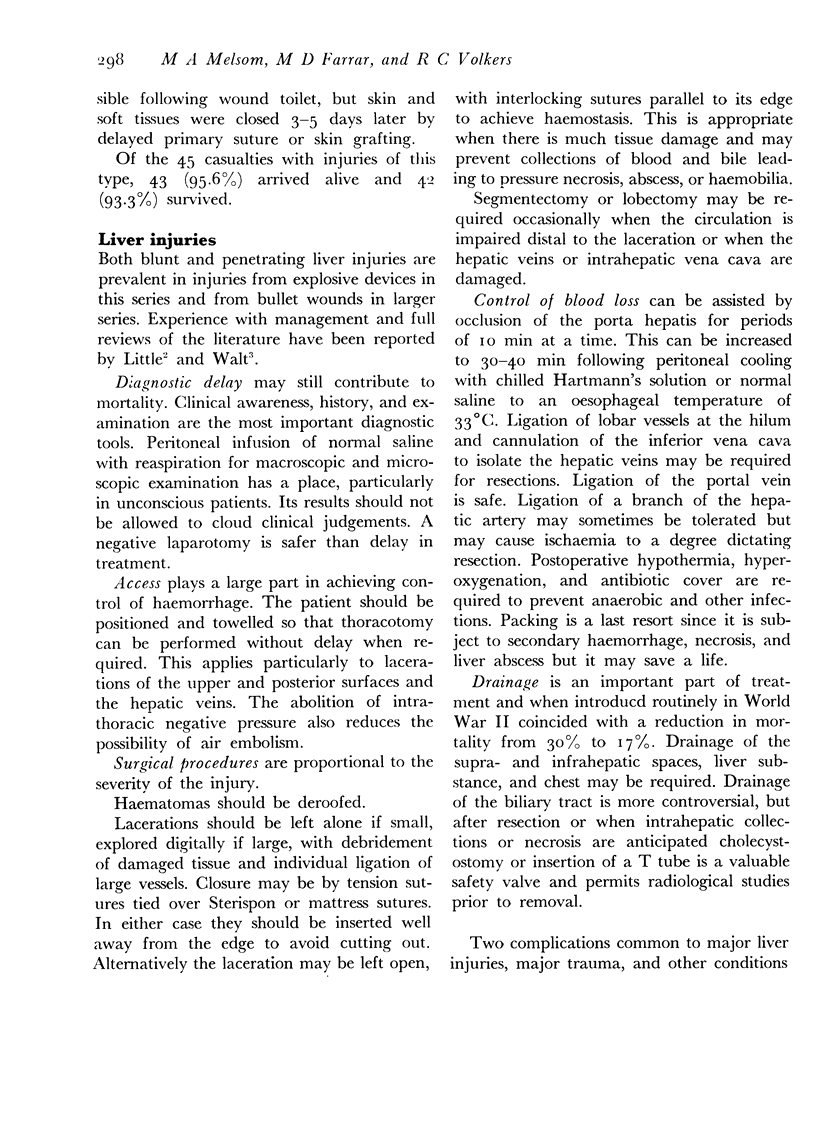
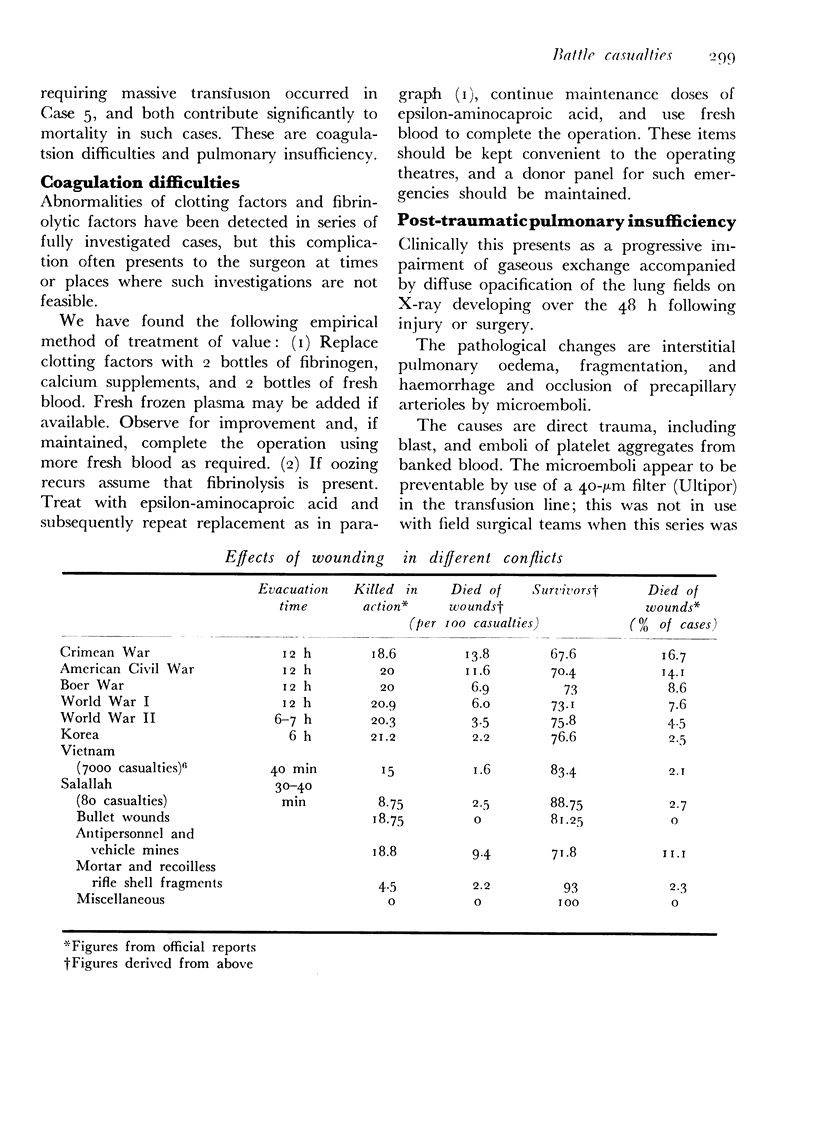
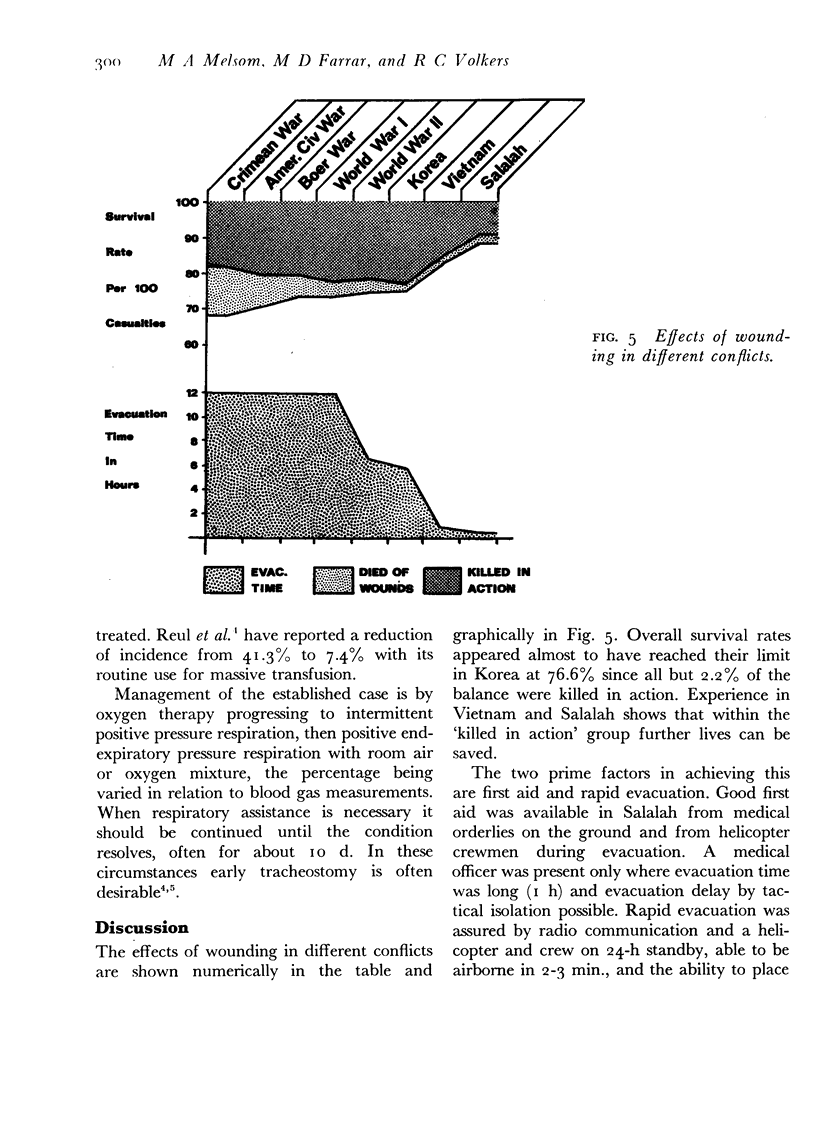

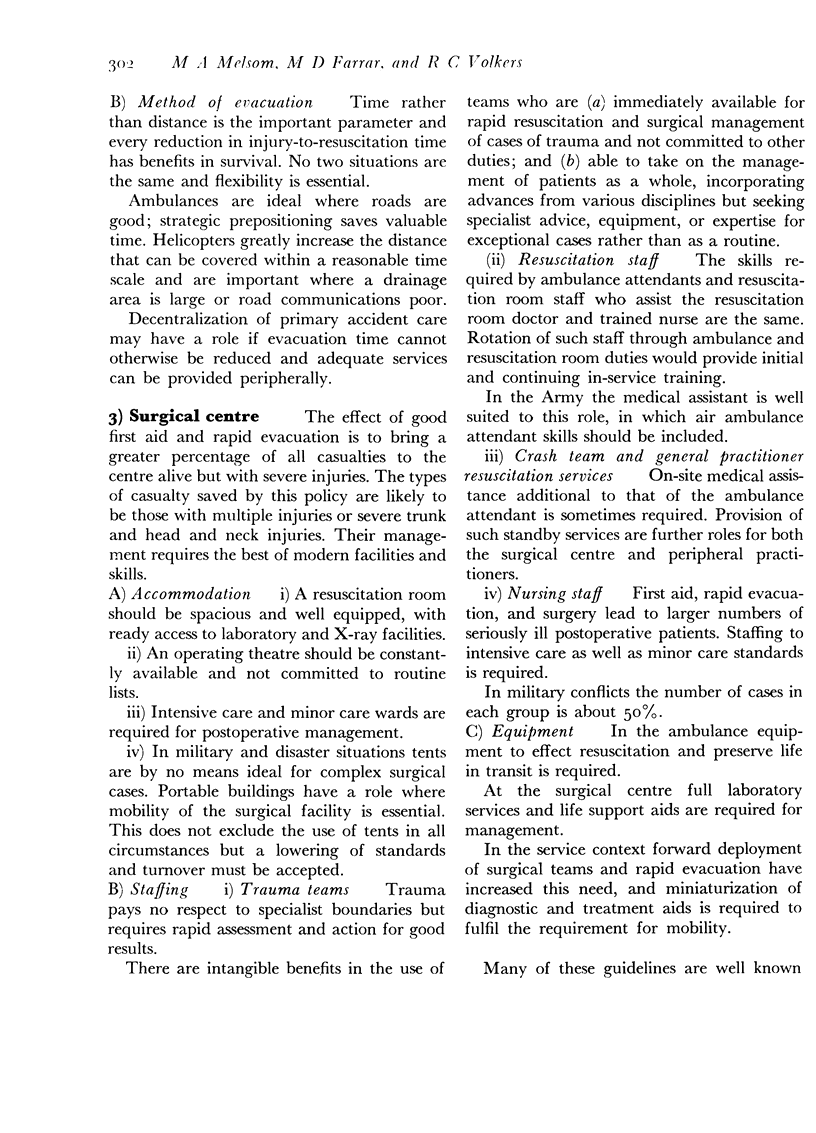
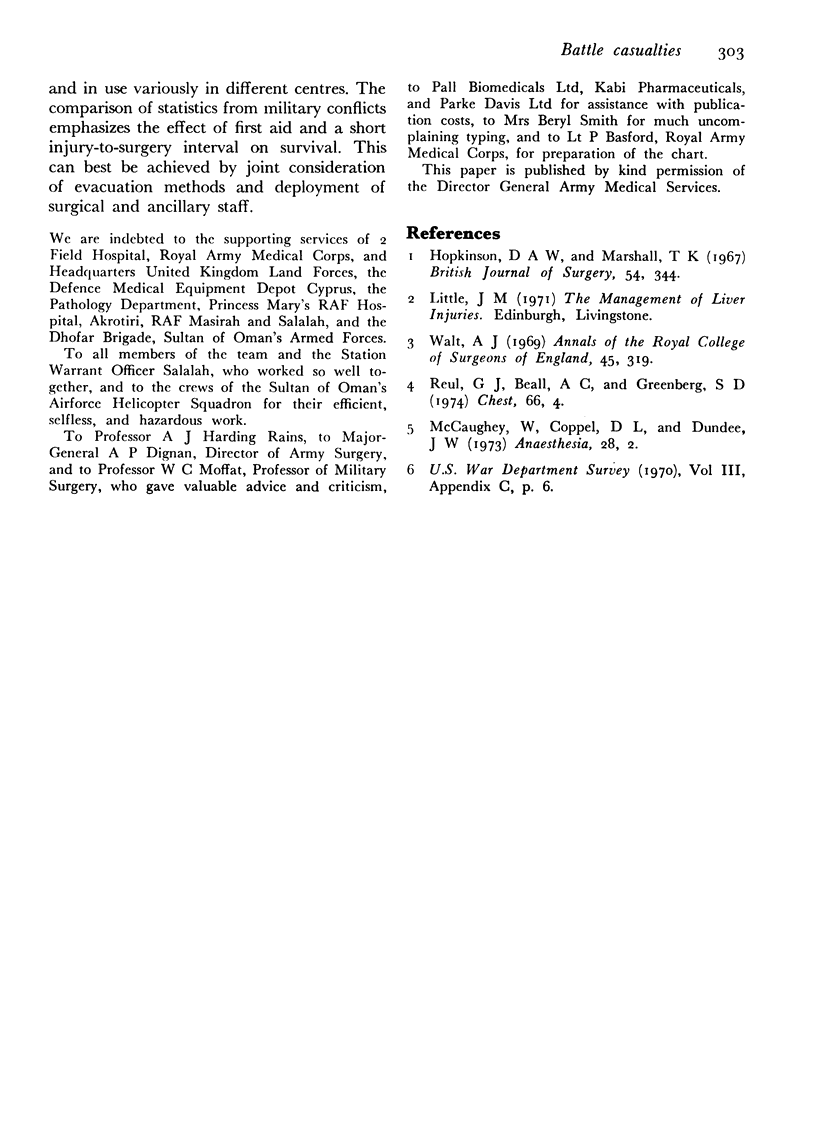
Images in this article
Selected References
These references are in PubMed. This may not be the complete list of references from this article.
- Hopkinson D. A., Marshall T. K. Firearm injuries. Br J Surg. 1967 May;54(5):344–353. doi: 10.1002/bjs.1800540507. [DOI] [PubMed] [Google Scholar]
- McCaughey W., Coppel D. L., Dundee J. W. Blast injuries to the lungs. A report of two cases. Anaesthesia. 1973 Jan;28(1):2–9. doi: 10.1111/j.1365-2044.1973.tb00277.x. [DOI] [PubMed] [Google Scholar]
- Reul G. J., Jr, Beall A. C., Jr, Greenberg S. D. Protection of the pulmonary microvasculature by fine screen blood filtration. Chest. 1974 Jul;66(1):4–9. doi: 10.1378/chest.66.1.4. [DOI] [PubMed] [Google Scholar]
- Walt A. J. The surgical management of hepatic trauma and its complications. Ann R Coll Surg Engl. 1969 Dec;45(6):319–339. [PMC free article] [PubMed] [Google Scholar]




